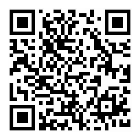(For new reader and those who request 好友请求, please read my 公告栏 first)One of the advantages of being retired is the freedom from any kind of obligation. You do something not because you had to but because you wanted to. Duringyour working years you may be interested in many things, but you do not have thetime to attend to them since your job duties come first. In retirement , you don’t have this difficulty and are free to pursue anything you are intellectually curiousabout. Between hard sciences such as physics and mathematics and humanities such as literature and history lie the disciplines often disparagingly termed as “soft sciences” such as social science. Last week there was a conference on Computational Social Science at Harvard. I decide to go and see just what the field is all about and what people in the field are interested in. Starting from essentially zero knowledge, below is what I learned.Traditionally, social sciences have three avenues of research:1.Design of surveys2.Analysis of government data (e.g. census)3.Study of specific problem in depth (e.g., the spread of xxx disease in xxx province)Because of privacy concern and expense of collecting data, social sciences were often data-poor. However, with increasing digitalization and networking of ourlives, the situation is drastically changing. Instead, according to peoples in the field, data are no longer a problem. In fact the situation has become data-rich and information-poor. We are being overwhelmed with data from all sources but don’t know what to do with them. Example: there are over 100 million blog sites on the Internet. There is a project at Harvard that collects every page ever written on these sites daily. But no one has the time or budget to analyze the data (yes, big brother are watching all you bloggers). We have still quite a ways to go along the data-information-knowledge-wisdom path.Examples of data that are currently available:1.Cell phone traffic data all over the world2.Detail election data3.Geophysical information4.Biological and genetic information on the population5.Purchase records of individuals6.RFID data on everythingThese data are multidimensional and inter-related. Making sense of them via visualization, statistical analysis, and providing security at the same time are the hard challenges of current social sciences. In time social scientists feel they will be able to understand and predict spread of social trends such as obesity, happiness., etc. The discipline is on the cusp of a revolution.Note added 4/2/2017 Readers might be interested to read http://blog.sciencenet.cn/blog-1565-866637.html about "differential privacy" and the danger of too much data
Computational Social Science
2024-07-15 140浏览
相关标准
 1stGB/T 18513-2001 中国主要进口木材名称
1stGB/T 18513-2001 中国主要进口木材名称  2ndKS T 1008-2016
2ndKS T 1008-2016  3rdGB/T 12272-1990 射频同轴连接器耐射频高电位电压测试方法
3rdGB/T 12272-1990 射频同轴连接器耐射频高电位电压测试方法  4thGB 9706.14-1997 医用电气设备 第2部分;X射线设备附属设备安全专用要求
4thGB 9706.14-1997 医用电气设备 第2部分;X射线设备附属设备安全专用要求  5thGB 19521.1-2004 易燃固体危险货物危险特性检验安全规范
5thGB 19521.1-2004 易燃固体危险货物危险特性检验安全规范  6thKS B ISO 14172-2016
6thKS B ISO 14172-2016  7thKS B ISO 5579-2016
7thKS B ISO 5579-2016  8thGB/T 16895.15-2002 建筑物电气装置 第5部分;电气设备的选择和安装 第523节: 布线系统载流量
8thGB/T 16895.15-2002 建筑物电气装置 第5部分;电气设备的选择和安装 第523节: 布线系统载流量  9thGB_T 5226.32-2017 GB_T 5226.32-2017
9thGB_T 5226.32-2017 GB_T 5226.32-2017  10thKS B ISO 14744-1-2016
10thKS B ISO 14744-1-2016
相关知识
 1st山东省农业科学院农产品所在营养学一区期刊Critical Reviews in Food Science and Nutrition上发表论文系统评价了全谷物食品对机体葡萄糖代谢的影响
1st山东省农业科学院农产品所在营养学一区期刊Critical Reviews in Food Science and Nutrition上发表论文系统评价了全谷物食品对机体葡萄糖代谢的影响 2nd江苏大学崔海英教授课题组在国际期刊Trends in Food Science & Technology发表论文
2nd江苏大学崔海英教授课题组在国际期刊Trends in Food Science & Technology发表论文 3rd河南省冷链食品质量安全控制重点实验室白艳红教授课题组在LWT-Food Science and Technology发表研究成果
3rd河南省冷链食品质量安全控制重点实验室白艳红教授课题组在LWT-Food Science and Technology发表研究成果 4th江苏大学高瑞昌教授团队在Trends in Food Science & Technology发表最新研究成果
4th江苏大学高瑞昌教授团队在Trends in Food Science & Technology发表最新研究成果 5th浙江大学樊龙江团队在《Trends in Plant Science》发表未来作物育种观点文章
5th浙江大学樊龙江团队在《Trends in Plant Science》发表未来作物育种观点文章 6th中国医学科学院病原所等在National Science Review上发表新发地疫情溯源研究成果揭示冷链运输食品可成为新冠病毒传播载体
6th中国医学科学院病原所等在National Science Review上发表新发地疫情溯源研究成果揭示冷链运输食品可成为新冠病毒传播载体 7th江苏大学齐向辉教授课题组在Trends in Food Science & Technology发表最新研究成果
7th江苏大学齐向辉教授课题组在Trends in Food Science & Technology发表最新研究成果 8th海南大学食品科学与工程学院吴龙副教授在TOP期刊《Critical Reviews in Food Science and Nutrition》合作发表综述论文
8th海南大学食品科学与工程学院吴龙副教授在TOP期刊《Critical Reviews in Food Science and Nutrition》合作发表综述论文 9th国家食用菌加工技术研发专业中心对食源性金黄色葡萄球菌检测方法综述发表在Food Science and Human Wellness杂志
9th国家食用菌加工技术研发专业中心对食源性金黄色葡萄球菌检测方法综述发表在Food Science and Human Wellness杂志 10th江苏大学段玉清教授课题组在国际权威期刊Trends in Food Science & Technology发表论文
10th江苏大学段玉清教授课题组在国际权威期刊Trends in Food Science & Technology发表论文
相关检测商品
 钡 GB 10736-2008 工作基准试剂 氯化钾立即询价
钡 GB 10736-2008 工作基准试剂 氯化钾立即询价 磷酸浓度 GBZ/T 160.30-2004 (部分废止)工作场所空气有毒物质测定 无机含磷化合物立即询价
磷酸浓度 GBZ/T 160.30-2004 (部分废止)工作场所空气有毒物质测定 无机含磷化合物立即询价 气压)微小气候( GB/T 934-2008 高温作业环境气象条件测定方法立即询价
气压)微小气候( GB/T 934-2008 高温作业环境气象条件测定方法立即询价 流动性(流平性) JC/T 482-2003 聚氨酯建筑密封胶立即询价
流动性(流平性) JC/T 482-2003 聚氨酯建筑密封胶立即询价 铅尘、铅烟 GBZ/T 300.15-2017 工作场所空气有毒物质测定 第15部分:铅及其化合物立即询价
铅尘、铅烟 GBZ/T 300.15-2017 工作场所空气有毒物质测定 第15部分:铅及其化合物立即询价 乐果、敌百虫 GBZ/T 160.76-2004 工作场所空气有毒物质测定 有机磷农药立即询价
乐果、敌百虫 GBZ/T 160.76-2004 工作场所空气有毒物质测定 有机磷农药立即询价 JC 863-2000 高分子防水卷材胶粘剂立即询价
JC 863-2000 高分子防水卷材胶粘剂立即询价 冷拉/热压后粘结性 GB/T 13477.1-2002 建筑密封材料试验方法 第1部分:试验基材的规定立即询价
冷拉/热压后粘结性 GB/T 13477.1-2002 建筑密封材料试验方法 第1部分:试验基材的规定立即询价 三氯硝基甲烷(氯化苦) GBZ/T 160.73-2004 工作场所空气有毒物质测定 硝基烷烃类化合物立即询价
三氯硝基甲烷(氯化苦) GBZ/T 160.73-2004 工作场所空气有毒物质测定 硝基烷烃类化合物立即询价 金属镉、氧化镉 GBZ/T 160.5-2004 工作场所空气有毒物质测定 镉及其化合物立即询价
金属镉、氧化镉 GBZ/T 160.5-2004 工作场所空气有毒物质测定 镉及其化合物立即询价

关于我们 百检网是国内知名B2B检测电商服务平台,专注于为第三方 检测机构以及中小微企业及个人用户搭建互联网+检测电商服务平台。平台汇集了国内外权威检测机构(CNAS/CMA),其中不乏国家级、省级重点实验室以及国际知名检测机构,为广大用户提供一站式检测服务。
客服热线 400-101-7153 专属服务:156 0190 2607 企业邮箱:Service@Baijiantest.Com 联系地址:上海市徐汇区宜山路700号
关注百检 


微信公众号

官方微博
首页中国澳大利亚英国加拿大韩国欧洲专利局德国美国日本 法律申明
百检集团
沪ICP备19010749号经营许可证编号:沪B2-20190666Copyright@2019www.bajiantest.comAll Rights Reserved



 400-101-7153
400-101-7153 15201733840
15201733840

